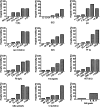Establishment and effectiveness evaluation of a scoring system for exertional heat stroke by retrospective analysis
- PMID: 32854781
- PMCID: PMC7453553
- DOI: 10.1186/s40779-020-00269-1
Establishment and effectiveness evaluation of a scoring system for exertional heat stroke by retrospective analysis
Erratum in
-
Correction to: Establishment and effectiveness evaluation of a scoring system for exertional heat stroke by retrospective analysis.Mil Med Res. 2021 Apr 16;8(1):26. doi: 10.1186/s40779-021-00318-3. Mil Med Res. 2021. PMID: 33863384 Free PMC article. No abstract available.
Abstract
Background: Heat stroke (HS) is a serious, life-threatening disease. However, there is no scoring system for HS so far. This research is to establish a scoring system that can quantitatively assess the severity of exertional heat stroke (EHS).
Methods: Data were collected from a total of 170 exertional heat stroke (EHS) patients between 2005 and 2016 from 52 hospitals in China. Univariate statistical methods and comparison of the area under the receiver operating characteristic (ROC) curve (AUC) were used to screen exertional heat stroke score (EHSS) parameters, including but not limited body temperature (T), Glasgow Coma Scale (GCS) and others. By comparing the sizes of the AUCs of the APACHE II, SOFA and EHSS assessments, the effectiveness of EHSS in evaluating the prognosis of EHS patients was verified.
Results: Through screening with a series of methods, as described above, the present study determined 12 parameters - body temperature (T), GCS, pH, lactate (Lac), platelet count (PLT), prothrombin time (PT), fibrinogen (Fib), troponin I (TnI), aspartate aminotransferase (AST), total bilirubin (TBIL), creatinine (Cr) and acute gastrointestinal injury (AGI) classification - as EHSS parameters. It is a 0-47 point system designed to reflect increasing severity of heat stroke. Low (EHSS< 20) and high scores (EHSS> 35) showed 100% survival and 100% mortality, respectively. We found that AUCEHSS > AUCSOFA > AUCAPACHE II.
Conclusion: A total of 12 parameters - T, GCS, pH, Lac, PLT, PT, Fib, TnI, AST, TBIL, Cr and gastrointestinal AGI classification - are the EHSS parameters with the best effectiveness in evaluating the prognosis of EHS patients. As EHSS score increases, the mortality rate of EHS patients gradually increases.
Keywords: Effectiveness of evaluation; Exertional heat stroke; Prognosis; Scoring system.
Conflict of interest statement
The authors declare that they have no competing interests.
Figures
References
-
- Leon LR, Bouchama A. Heat stroke. Compr Physiol. 2015;5(2):611–647. - PubMed
-
- Inoue N, Sato A, Ikawa Y, Shimizu M, Okajima M, Taniguchi T, et al. Successful treatment of exertional heat stroke using continuous plasma diafiltration. J Clin Apher. 2016;31(5):490–492. - PubMed
-
- Fan H, Zhu JH, Ye JH. Cold hemodiafiltration for exertional heat stroke resulting in multiple organ failure. Ther Apher Dial. 2015;19(5):522. - PubMed
-
- Yeo TP. Heat stroke: a comprehensive review. AACN Clin Issues. 2004;15(2):280–293. - PubMed
-
- Goforth CW, Kazman JB. Exertional heat stroke in navy and marine personnel: a hot topic. Crit Care Nurse. 2015;35(1):52–59. - PubMed
Publication types
MeSH terms
LinkOut - more resources
Full Text Sources
Research Materials





